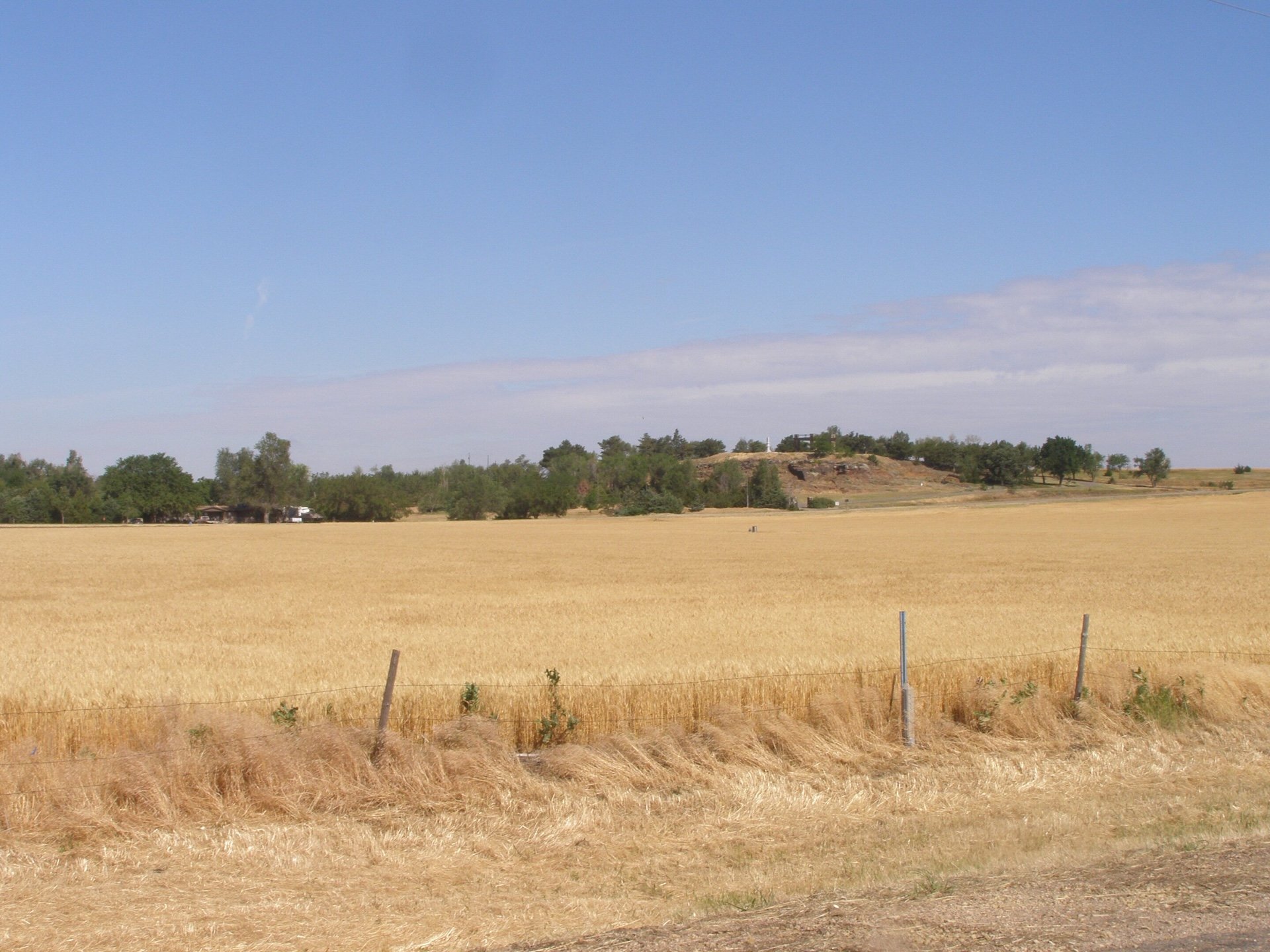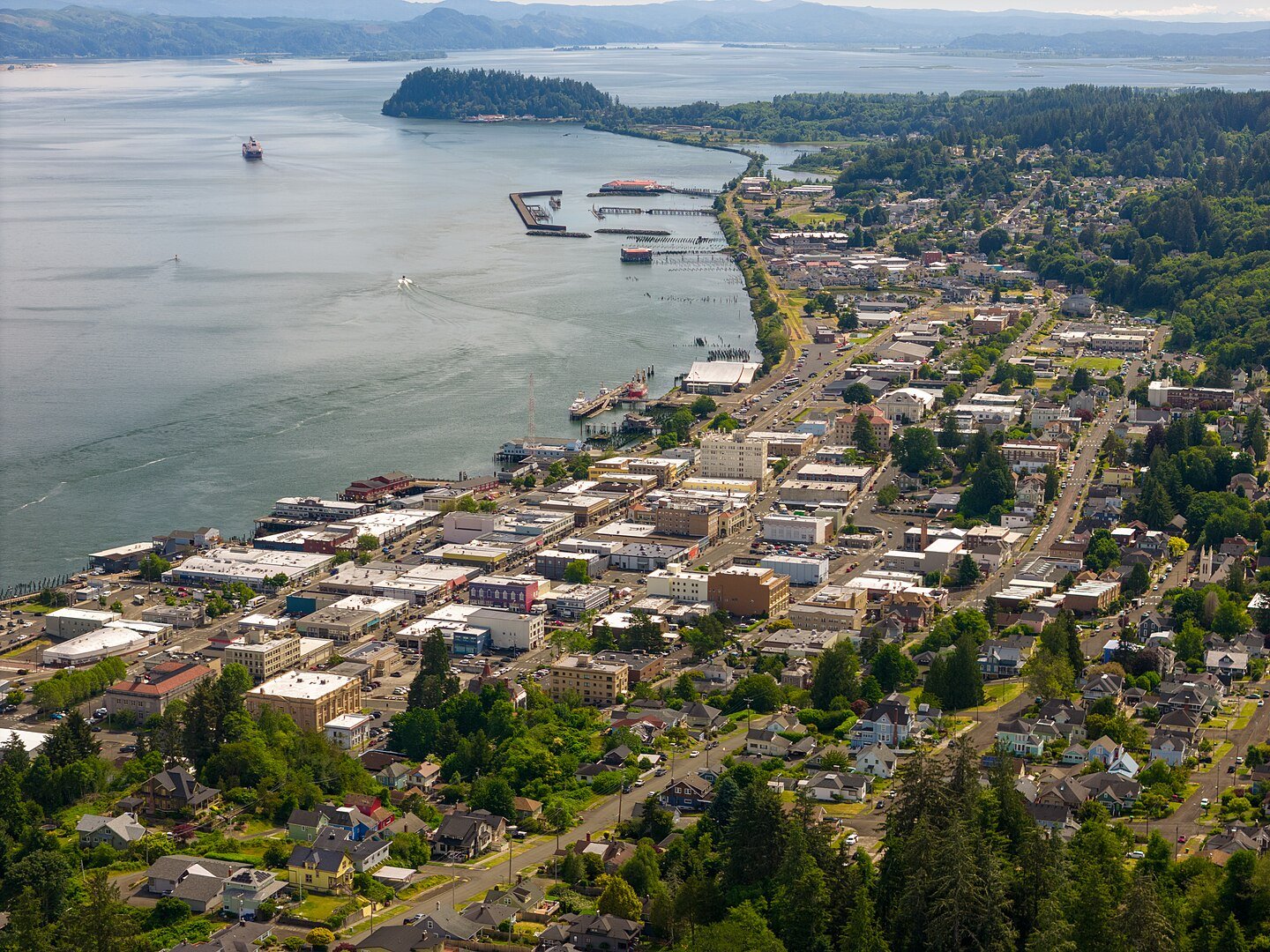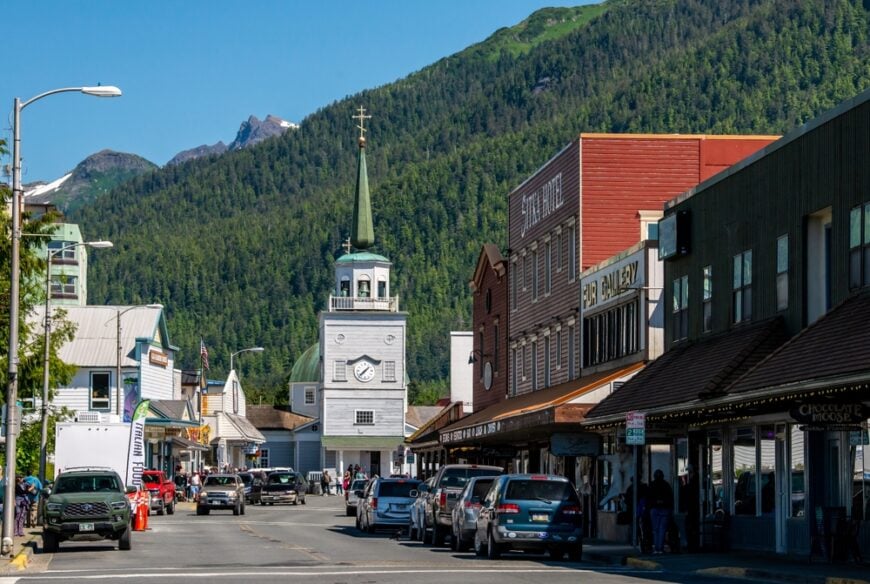
Whenever I feel the urge to swap fluorescent lights for rushing rivers, I head north-west, where salmon still run strong and small towns wear mountain air like a favorite flannel. Each place below feels intimate yet impossibly scenic, letting me cast a line one minute and tuck into a café the next.
From Idaho’s alpine lakes to Oregon’s wave-splashed coves and Alaska’s tidal passages, these communities remind me that good fishing is really an excuse to linger in beautiful corners of the map.
I’ve ordered them as a countdown, so the farther you scroll, the closer you get to my personal number-one spot. Every town earns its rank with a mix of postcard views, welcoming locals, and access to salmon that’ll test any drag. Grab your favorite rod—let’s see which of these nineteen gems hooks you first.
19. McCall, Idaho
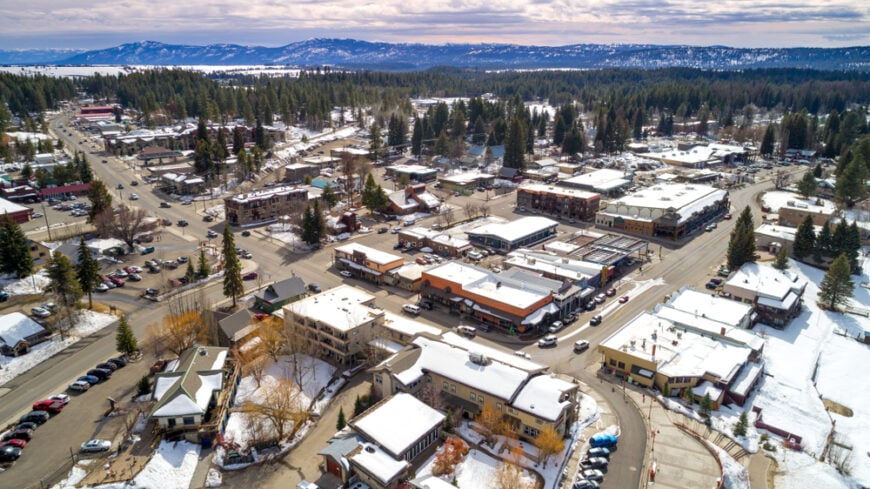
McCall sits on the southern shore of Payette Lake, where glassy waters mirror a ring of ponderosa pines and granite peaks that always make me exhale a little slower. Summer mornings, I can troll right off the public docks for land-locked kokanee, a diminutive cousin of sockeye salmon that turns the lake silver at sunrise.
In the afternoon, I usually drive twenty minutes north to the Little Salmon River near Riggins, where wild Chinook return each spring in numbers that surprise anyone who thinks Idaho is all potatoes.
When I need a break from fishing, the two-mile Shoreline Trail circles the lake, offering breezy views and the occasional moose sighting. Come winter, the town shifts into ski mode at Brundage Mountain, but die-hards still ice-fish for kokanee beneath two feet of powder.
Year-round, the town’s tiny, wood-beamed breweries keep me fueled with huckleberry ales and tales of “the one that got away.” The average price for a 3-4 bedroom home in McCall ranges from $600,000 to $800,000, offering lakeside serenity for those drawn to fishing and forested landscapes.
Where is McCall?
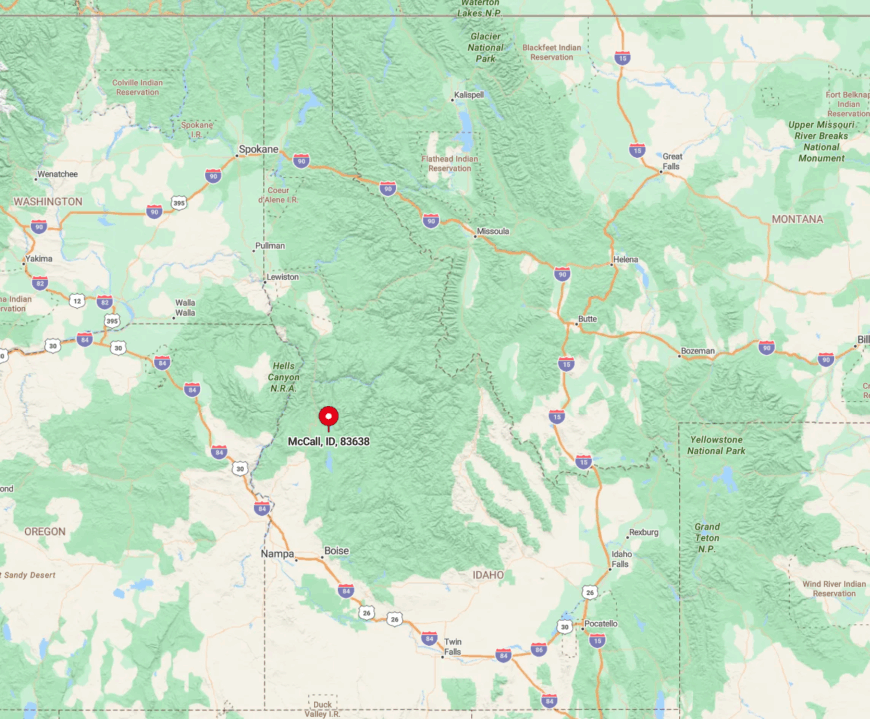
McCall sits in west-central Idaho, about 100 miles north of Boise on Highway 55, squeezed between the Payette National Forest and the Salmon River Mountains. Its 5,000-foot elevation blesses the town with crisp nights even in July, a detail I love when campfire smoke drifts over the marina.
The most scenic approach follows the Payette River Scenic Byway, a winding route that shadows whitewater rapids and steep canyon walls. Year-round shuttle services run from Boise Airport, but I prefer driving so I can pull over at Rainbow Bridge, cast a few exploratory drifts, and let the river dictate my schedule.
18. Anacortes, Washington
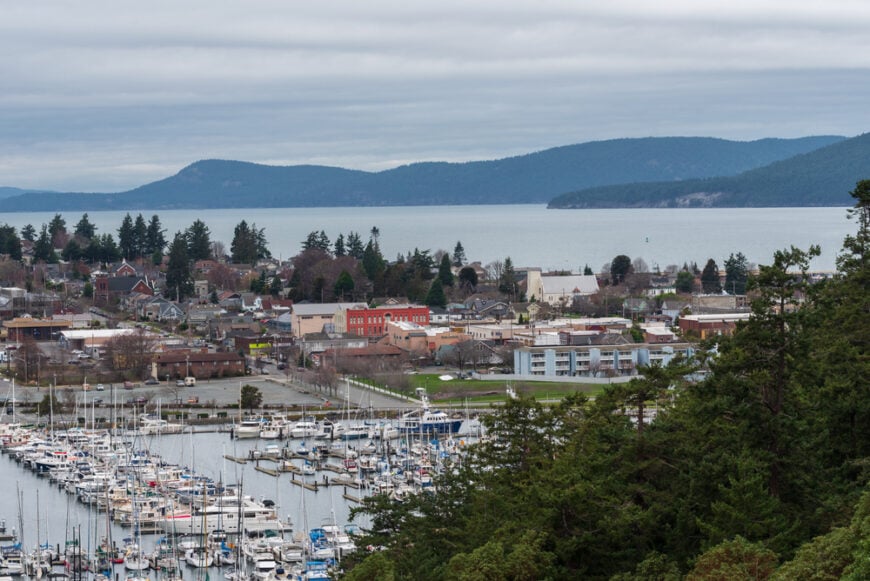
Anacortes spreads across the northern tip of Fidalgo Island, where I can snag a coffee downtown and be sight-casting to pink salmon in Guemes Channel ten minutes later. The Cap Sante Marina hosts summer salmon derbies, and nothing beats the thrill of weighing in a fat king while the ferry horns echo in the harbor.
When tides slack, I wander up to Cap Sante Viewpoint for a panorama of the San Juan Islands—an instant reminder that the next bite might be cruising right beneath those glimmering currents.
Kayak anglers love the sheltered coves around Saddlebag Island State Park, a spot few visitors realize is reachable by a quick paddle from town. Off the water, the laid-back Commercial Avenue art walk serves craft beer, local oysters, and live music that somehow feels sweeter after a day on deck.
For those interested in making Anacortes their home, 3-4 bedroom houses are priced between $700,000 and $900,000, reflecting its reputation as a gateway to premier salmon fishing waters.
Where is Anacortes?
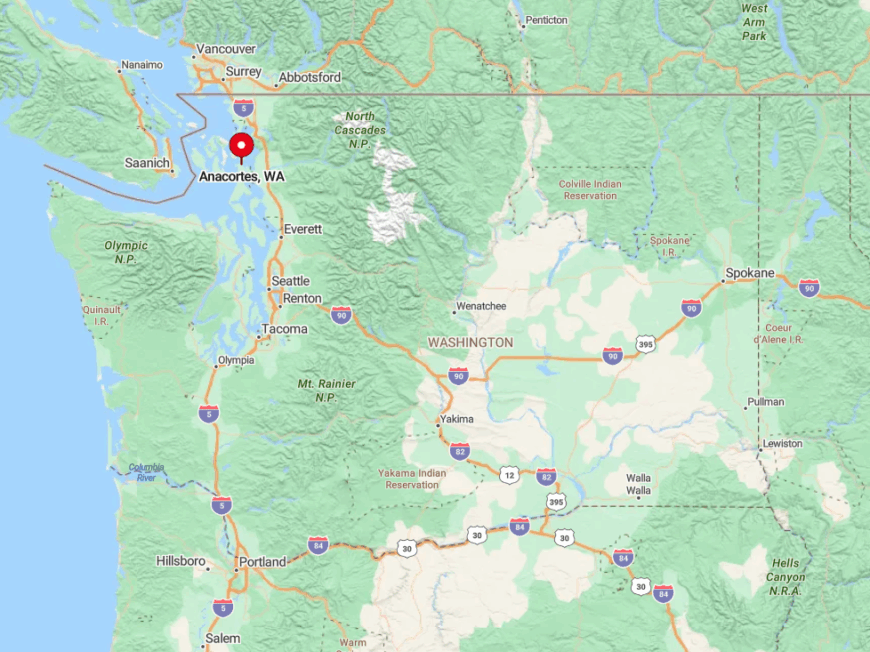
Anacortes anchors the gateway to Washington’s San Juan archipelago, roughly 80 miles north of Seattle via Interstate 5 and Highway 20. Because it hosts the state ferry terminal, it’s perfectly positioned between mainland conveniences and island solitude.
Geography gifts the town with nutrient-rich tidal exchanges that funnel baitfish—and therefore salmon—right past its breakwaters. Drivers find easy parking at the marina, but I sometimes hop the Amtrak to Mount Vernon and finish the last 16 miles on a rented e-bike, soaking in salty breezes before the first cast.
17. Sitka, Alaska
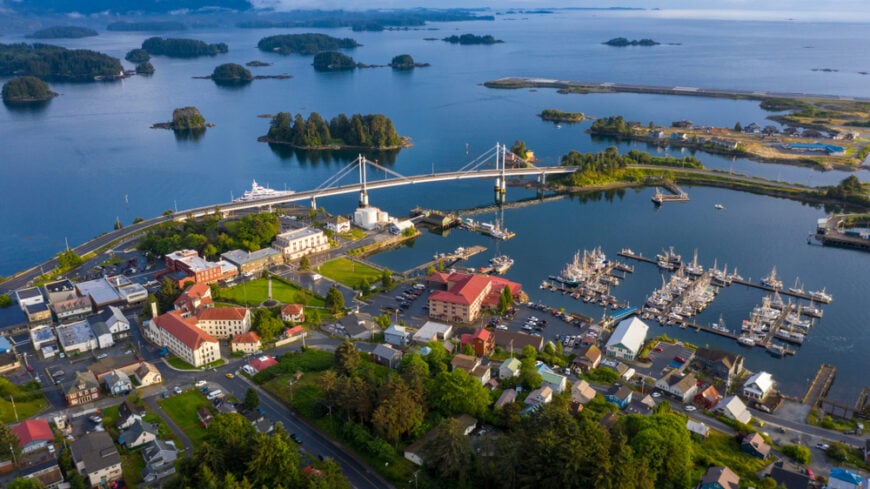
Wrapped in the emerald embrace of the Tongass National Forest, Sitka feels like a frontier postcard brought to life, complete with bobbing fishing boats and snow-gilded volcanoes.
The outer coast receives five species of Pacific salmon, yet locals still whisper about “the Sitka slam,” landing all five in a single day—trust me, it’s possible if you time the runs right.
Between bites, I wander through Russian-era architecture or search for sea otters near Old Sitka State Historical Park, where spruce needles scent the air like a natural cologne.
My favorite hidden gem is the confluence of the Indian River and Totem Trail; pinks stack so thick here in late July that I’ve watched brown bears ignore anglers because the buffet is that abundant.
When the weather socks in, the Sheldon Jackson Museum showcases Tlingit artistry that reminds me fishing is just one thread in a much older cultural net. Nights wind down with a spruce-tip ale at Harbor Mountain Brewing while eagles perch on harbor pilings, silhouetted against a sky still pale at 11 p.m.
3-4 bedroom homes in Sitka typically cost between $450,000 and $650,000, making it a scenic choice for anglers looking to settle where the mountains meet the sea.
Where is Sitka?
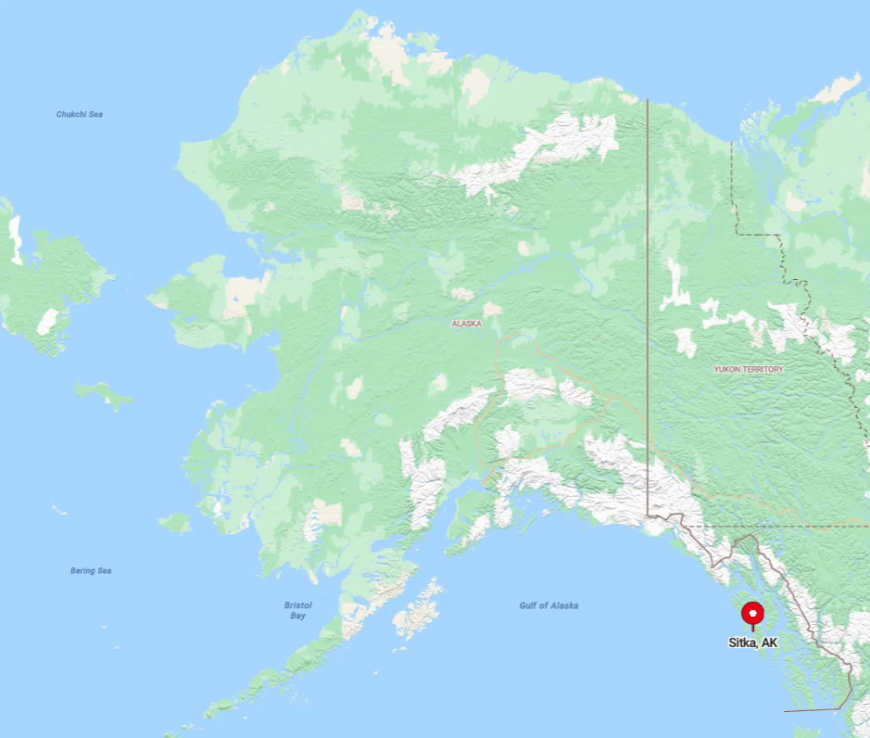
Sitka lies on Baranof Island along Alaska’s Inside Passage, but unlike most panhandle towns, it faces the open Pacific, lending it wilder swells and richer feeding grounds. Commercial jets land at the narrow seaside runway, though I savor the ferry from Juneau, watching whales breach en route.
Mountains rise straight from tidewater, funneling nutrient-laden streams that salmon can’t resist. Once docked, everything is within ten minutes by taxi, yet a rented skiff expands your world to a maze of coves, kelp beds, and promise.
16. Newport, Oregon
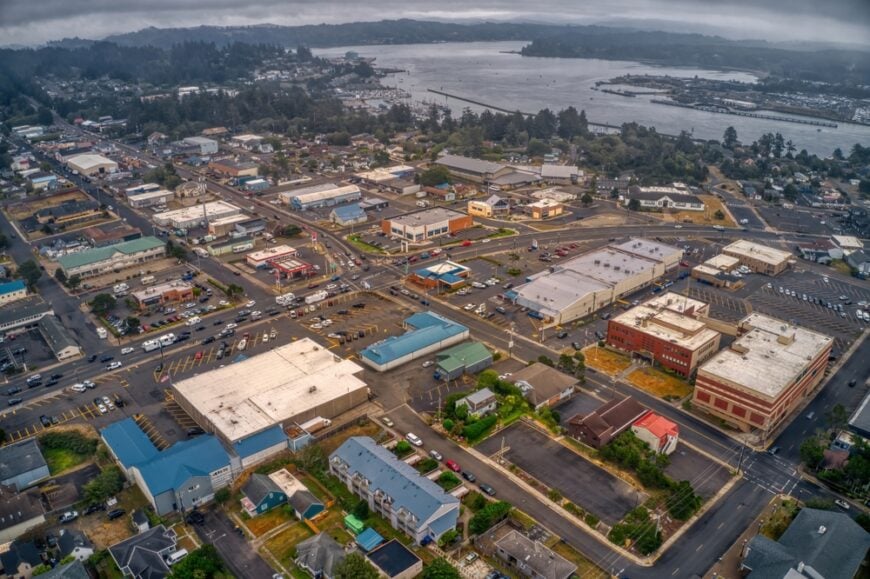
In Newport, the scent of salt and Dungeness crab drifts from the historic Bayfront while sea lions bellow like rowdy dockworkers beneath sun-bleached piers. I usually start my day tossing spinners at sunrise on the north jetty of Yaquina Bay, where Chinook stage before their upriver push.
When tides turn, I duck into Local Ocean for fish tacos, then stroll up to the Oregon Coast Aquarium to gape at the massive salmon tank and fine-tune lure colors based on real-time observation. A little-known perk is the free public fillet station near Port Dock 5, complete with gull-proof covers that make cleanup painless.
If I need a break, the Yaquina Head Lighthouse trail offers tide pools crawling with purple sea urchins—nature’s reminder that rich ecosystems start with the tiniest life. In Newport, 3-4 bedroom homes range from $500,000 to $650,000, providing coastal living near some of the best salmon runs on the Oregon coast.
Where is Newport?
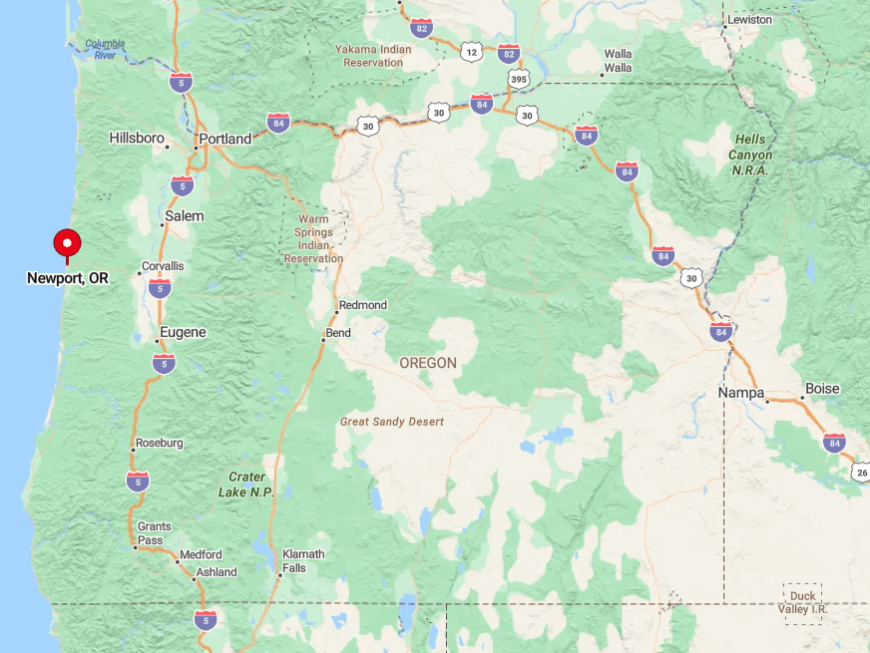
Newport anchors Oregon’s central coast, roughly 130 miles southwest of Portland via Highway 99 and the famous Highway 101 shoreline drive. Yaquina Bay funnels nutrient-rich ocean water inland, creating an estuary that salmon use as a rest stop before racing up the Yaquina and Big Elk Rivers.
The town’s working-port vibe means bait shops, charter boats, and seafood houses cluster within walkable blocks, so I rarely need my truck once I arrive. For travelers, the quickest route is OR-18 through the Coast Range, but I recommend detouring onto scenic OR-229 for a slow, curvy preview of the river you’ll soon be fishing.
15. Seward, Alaska

Seward greets visitors with steep, glaciated peaks plunging into Resurrection Bay, a setting so jaw-dropping I sometimes forget to cast. Silver salmon run thick here in late summer, and the annual Silver Salmon Derby turns the harbor into a friendly frenzy; I once watched a 16-pound coho clinch a $10,000 prize.
When seas cooperate, I book a six-pack charter to Pony Cove, where feeder kings prowl deep currents shaded by towering fjords. On layovers, the Alaska SeaLife Center lets me study salmon anatomy up close, helping refine hook placement on the water.
A lesser-known hike, Tonsina Creek Trail, rewards patient anglers with tidal-pool cohos less than three miles from town, plus the chance to spot black bears fishing the same riffles.
Evenings wind down with glacier ice in my cocktail at the Seward Brewing Company, the bay outside glowing turquoise under midsummer’s lingering light. Seward offers 3-4 bedroom homes priced between $350,000 and $500,000, ideal for those seeking access to world-class fishing in Resurrection Bay.
Where is Seward?
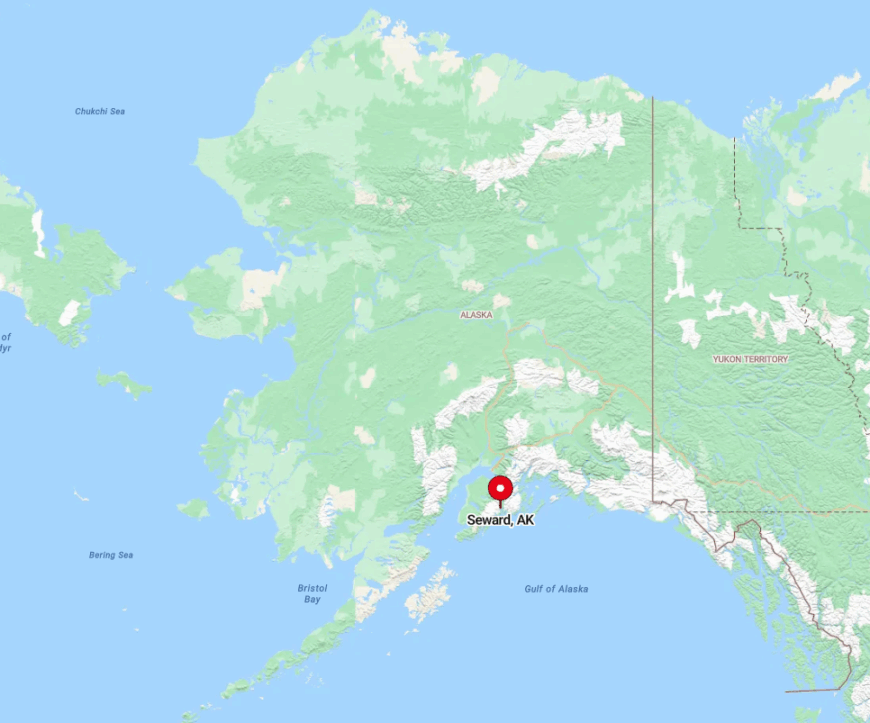
Seward sits 125 road miles south of Anchorage at the terminus of the Seward Highway, a route so scenic that I always schedule photo stops at Turnagain Arm and Kenai Lake. The town’s ice-carved Resurrection Bay stays ice-free year-round, allowing consistent charters to offshore feeding grounds.
The Alaska Railroad offers a stress-free alternative to driving, and its glass-domed cars provide eagle-eye views of glaciers visible nowhere else from the road. Once in town, the small-craft harbor, fish processor, and campsite circle each other in a compact loop, so you can park once and live on foot, rod in hand, of course.
14. Winthrop, Washington
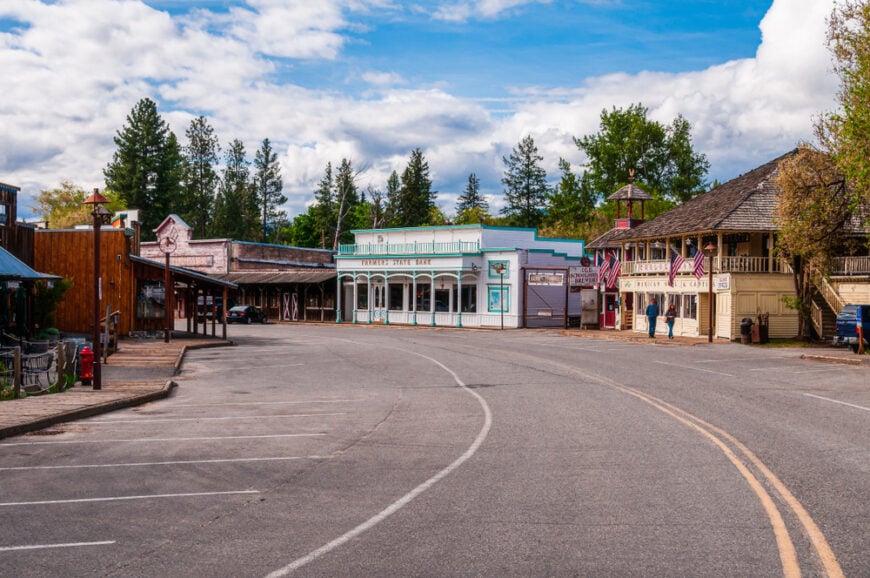
Winthrop dresses in Old West flair—think boardwalks and hitching posts—but the Methow River running behind those wooden façades delivers thoroughly modern salmon thrills.
Summer steelhead and fall Chinook thread the clear riffles beneath the historic suspension bridge, where I’ve swung flies at dusk while bats skimmed the water for insects.
A quick drive up Highway 20 lands me at Mazama’s cutthroat-filled creeks, perfect when salmon are shy or crowds gather. Local tip: the Town Trailhead parking lot doubles as access to a hidden braid of the river where I’ve sight-casted to rolling coho with no one else around.
Between sessions, I fuel up on huckleberry ice cream at Sheri’s Sweet Shoppe, then browse the Shafer Historical Museum’s mining relics—reminders that this valley was built on gold long before salmon became its new treasure.
Nighttime lodging ranges from riverside tent sites to boutique cabins with claw-foot tubs for soaking sore casting arms. 3-4 bedroom homes in Winthrop are priced between $500,000 and $700,000, offering mountain charm with rivers teeming with salmon nearby.
Where is Winthrop?

The town nestles in the Methow Valley on the eastern slope of Washington’s North Cascades, roughly four hours from Seattle via Highway 20’s alpine passes. That high-altitude road stays closed in deep winter, which keeps summer crowds manageable and fishing pressure light.
Glacial melt feeds the Methow, moderating water temps and drawing salmon far inland—over 500 river miles from the Pacific. I like breaking the drive in Burlington, topping off the tank and cooler before tackling the winding climb to Washington Pass and its jaw-dropping overlook.
13. Astoria, Oregon
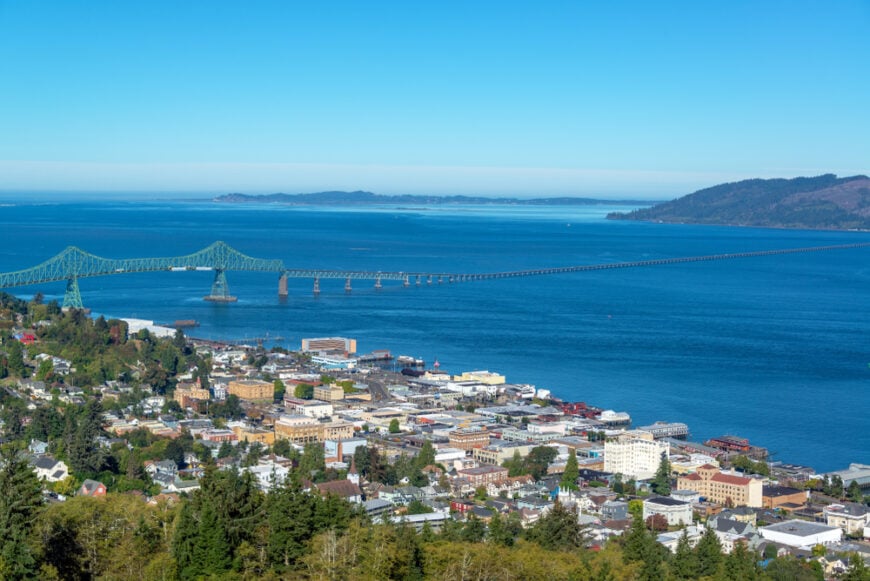
Astoria perches at the mouth of the mighty Columbia, where river and ocean wrestle in a swirl of tide rips that salmon navigate by the millions. Every August I join the Buoy 10 fishery, Megler Bridge as sea-bright kings surge past—there’s nothing like that first reel scream against a backdrop of Victorian rooftops.
Off the water, the Cannery Pier Museum chronicles the city’s salmon-packing heyday, and I always leave inspired to keep the tradition alive with my own catch. Lesser known is the Alderbrook Lagoon, a calm, grassy backwater perfect for kayak anglers chasing smaller “jack” Chinook on light tackle.
Rainy afternoons find me climbing the 164-step Astoria Column for a panorama that includes the exact rip line where I hooked my personal best 30-pounder. Evenings end with a bowl of steamer clams and a Fort George Vortex IPA, the estuary lights flickering like orange coals along the riverbanks.
Astoria features 3-4 bedroom homes ranging from $450,000 to $600,000, appealing to those who enjoy fishing along the Columbia River in a town rich with history.
Where is Astoria?
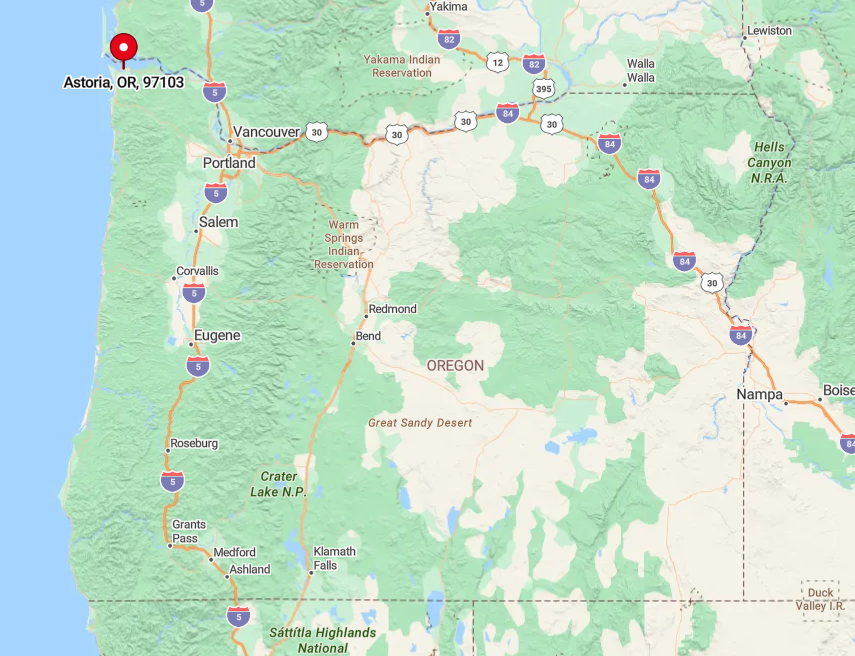
Astoria crowns Oregon’s northwest tip, two hours from Portland via US-30, just shy of the Washington border. Its strategic perch on a cape means saltwater breezes mingle with freshwater fog, creating nutrient-rich upwelling that funnels bait and salmon alike.
Highways are straightforward, but arriving by boat up the Columbia or by cyclists on the Lewis and Clark Trail adds a sense of arrival worthy of this historic town. Public ramps at East Mooring Basin make launching easy, while the Riverwalk trolley lets shore-bound anglers hop among piers without moving their cars.
12. Haines, Alaska
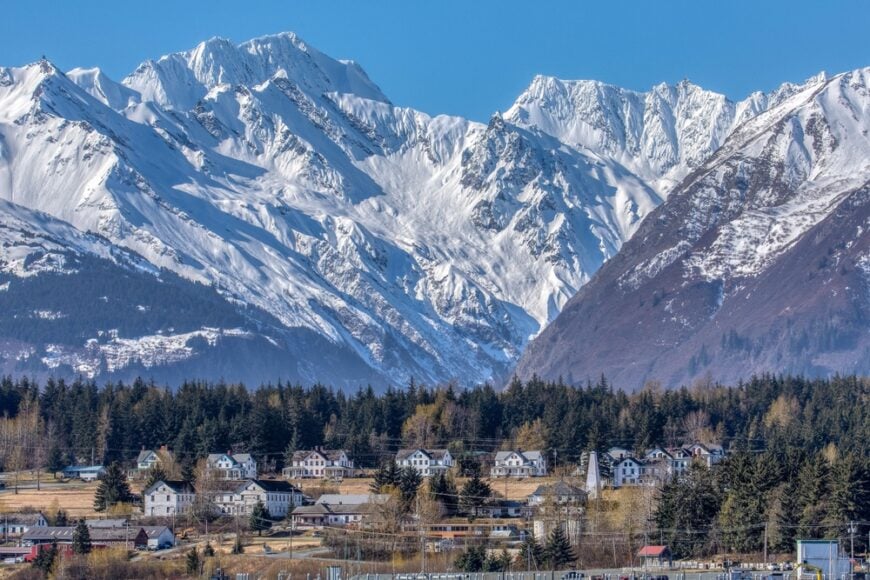
Haines feels like Alaska distilled: snow-capped peaks, and a main street where bald eagles outnumber traffic lights. The Chilkat River’s late-summer chum and coho runs are legendary, but I’m especially fond of the smaller Chilkoot River, where I can hook silvers in jade-green pools while brown bears fish the opposite bank.
When tides allow, I launch a skiff into Lynn Canal, the continent’s deepest fjord, to mooch for feeder kings amid breaching humpbacks. A lesser-known perk is the winter eagle congregation; thousands gather to feast on spawned-out salmon, turning riverside pullouts into world-class photo blinds.
Sunset strolls along the Portage Cove boardwalk leave me thinking that nowhere balances wilderness and community quite like Haines. In Haines, 3-4 bedroom homes typically cost between $300,000 and $450,000, making it a scenic and affordable choice for salmon fishing enthusiasts.
Where is Haines?
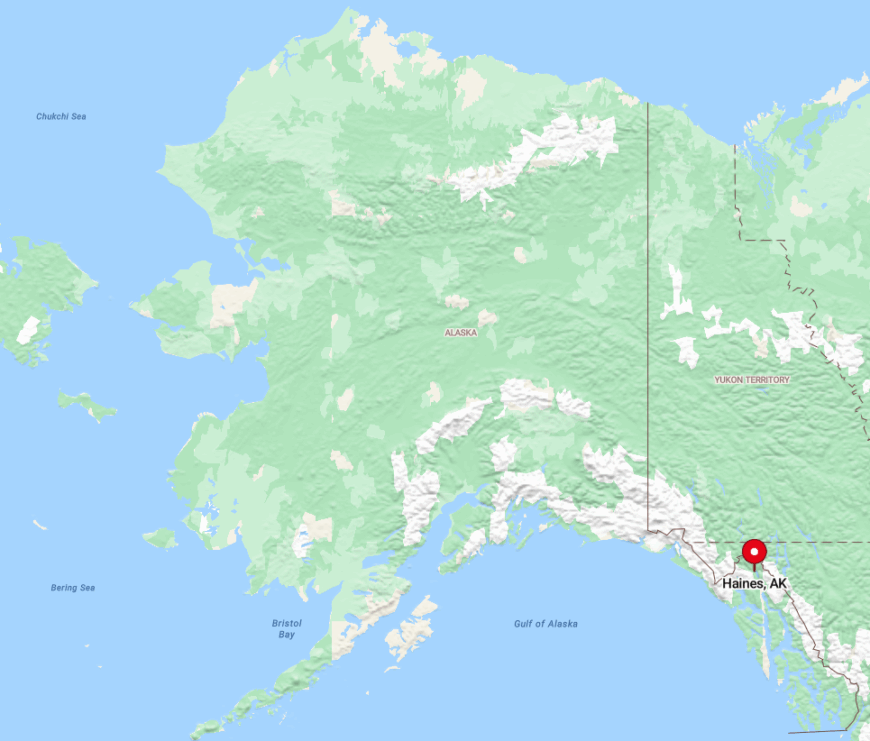
Located along the northern Inside Passage, Haines is 75 marine miles north of Juneau but reachable by road via the Haines Highway from Haines Junction, Yukon. That cross-border drive parallels the Chilkat Bald Eagle Preserve, where roadside pull-offs double as river-access points.
The town’s position at the convergence of glacial rivers and deep ocean allows salmon multiple migration routes, increasing angling odds. Ferries, small planes, and the scenic highway each provide a distinct arrival story; I recommend at least one leg by water to fully appreciate the labyrinth of fjords salmon traverse.
11. Tillamook, Oregon

Tillamook might be famous for cheese, but anglers know its real dairy air is the scent of freshly cured eggs drifting through morning mist on the Wilson River. I rotate among the Trask, Kilchis, and Tillamook rivers, picking whichever color or flow best matches Chinook moods—a luxury few coastal towns offer.
A hyper-local tip: the small boat ramp at Burton-Fraser Wayside provides quick access to the ghost channel behind Memaloose Point, where chrome-bright fall kings rest before their upstream dash.
If the weather turns, the Latimer Quilt & Textile Center offers a surprisingly engaging detour, showcasing salmon motifs stitched by regional artists. Tillamook offers 3-4 bedroom homes between $400,000 and $550,000, placing residents within reach of rivers and bays famous for their salmon runs.
Where is Tillamook?
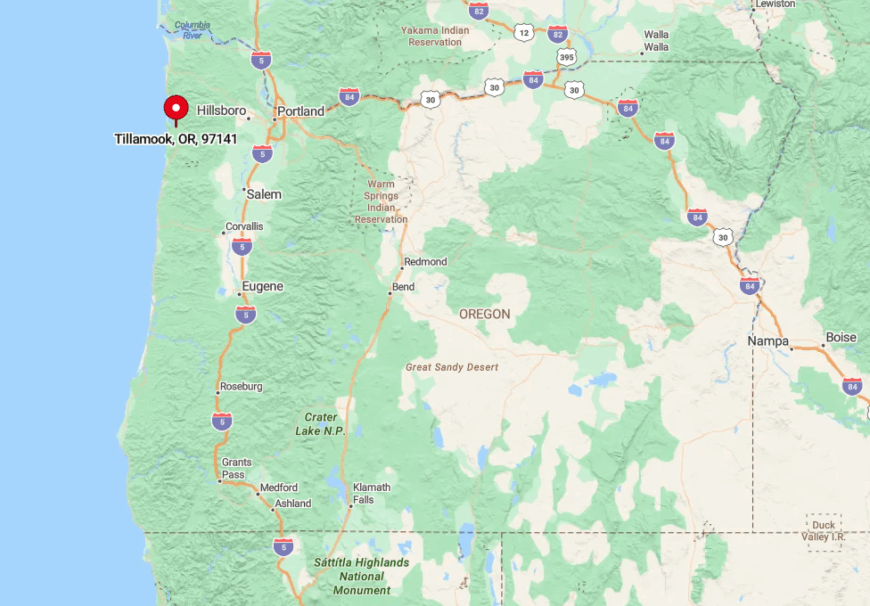
The town sits an hour and a half west of Portland via the Wilson River Highway, tucked between dairy pastures and the Coast Range. Its wide bay funnels five salmon-rich rivers, creating a literal buffet line for fish and anglers alike.
The flat valley floor allows easy boat launches and pull-outs, so I can chase the bite without lengthy drives. Visitors can fly into Portland, rent a car, and be checking tide charts over a cheese sampler before lunch.
10. Ketchum, Idaho
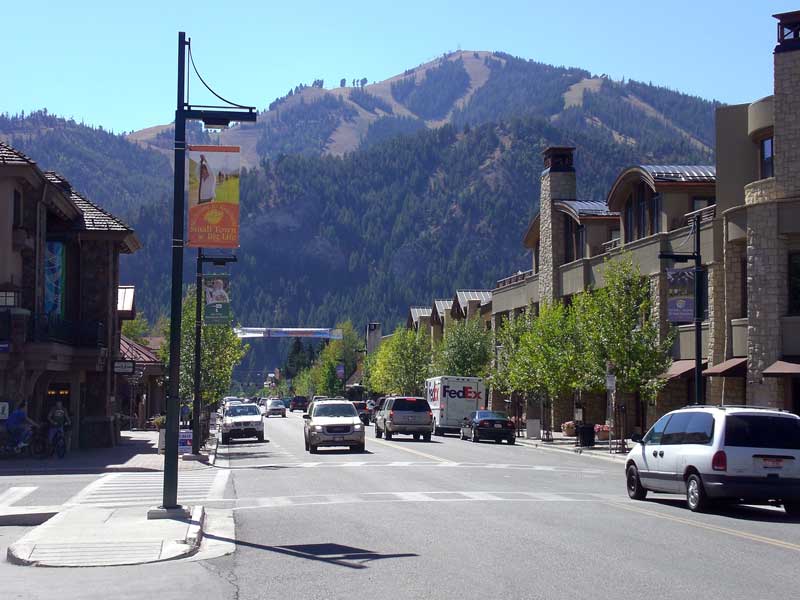
Ketchum, better known for ski slopes at Sun Valley, hides a lesser-advertised perk: the upper Salmon River, where high-elevation Chinook runs bring ocean-grown muscle to mountain scenery.
Warm afternoons draw me to nearby Redfish Lake, whose name nods to the once-record sockeye returns that still spark ongoing recovery efforts—spotting even a handful feels like witnessing history.
Off the water, the Sawtooth Botanical Garden’s pollinator walk reminds me how healthy river corridors start well beyond the banks. A hidden gem is the Penny Lake youth-only fishing pond; adults can’t fish, but handing my rod to a curious kid and watching their first salmonid bend the graphite is pure magic.
When the sun dips behind Bald Mountain, I grab a bison burger at Grumpy’s and recount the day beneath strings of license plates and ski memorabilia. The average price for a 3-4 bedroom home in Ketchum ranges from $900,000 to $1,200,000, providing upscale mountain living close to pristine fishing streams.
Where is Ketchum?
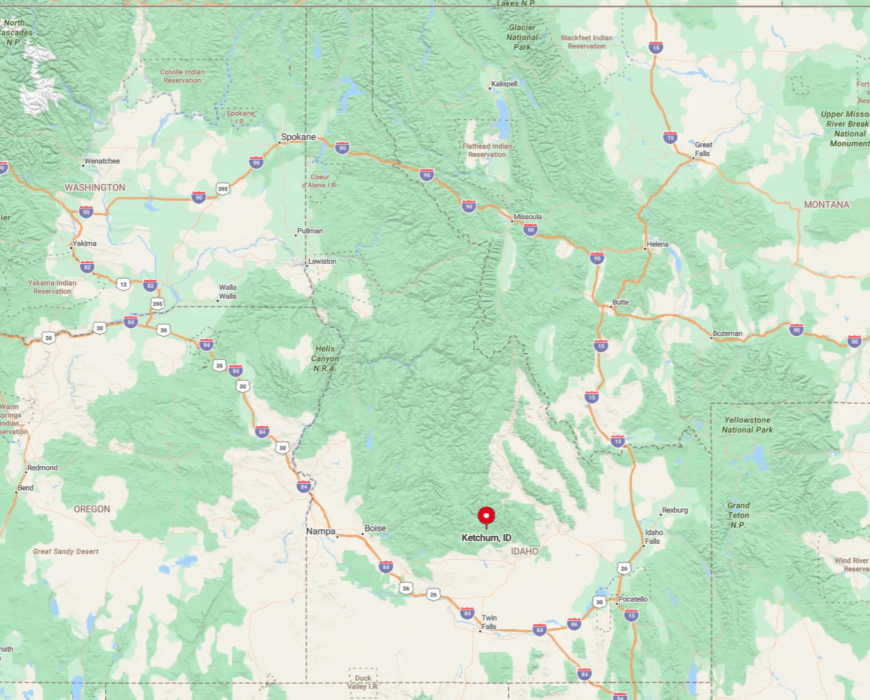
Ketchum lies in central Idaho’s Wood River Valley, 150 miles east of Boise via scenic US 20 and Highway 75. The town perches at nearly 6,000 feet, so snowmelt keeps rivers cool, perfect for salmon that ascend the Snake and Salmon River corridors all the way from the Pacific.
Public shuttle buses connect the town with Stanley Basin, letting me fish a 70-mile stretch without juggling car logistics. For fly-in travelers, Friedman Memorial Airport in nearby Hailey accepts commercial flights, and a 15-minute taxi ride lands you on Ketchum’s stroll-friendly streets.
9. Depoe Bay, Oregon
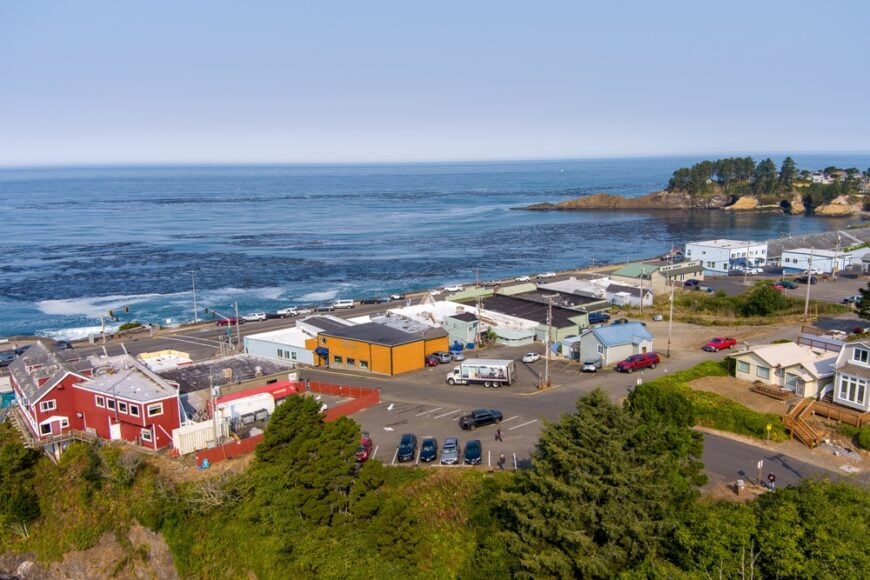
Depoe Bay bills itself as the world’s smallest navigable harbor, and navigating that narrow, rock-walled channel at dawn while swells boom outside is enough adrenaline to replace coffee.
Charter captains here specialize in nearshore trolling for coho and Chinook, and I’ve often had whales surface within casting range—talk about bycatch envy. Between trips, I lean over the seawall downtown to watch gray whales spout almost year-round, spotting them easier than tourist crowds expect.
A secret side quest is hiking down to the spongy, kelp-fringed tide pools of North Point at low tide, then tossing a spoon into the wash where salmon sometimes pick off stunned baitfish. For lunch, the OPRD Whale Watching Center offers binoculars and warm cocoa, a priceless combo when coastal winds whip.
Evening means chowder at Gracie’s Sea Hag, where the bartender still rings a ship’s bell every time someone lands a keeper salmon. In Depoe Bay, 3-4 bedroom homes are priced between $500,000 and $700,000, offering dramatic coastal views and access to rich offshore fishing grounds.
Where is Depoe Bay?
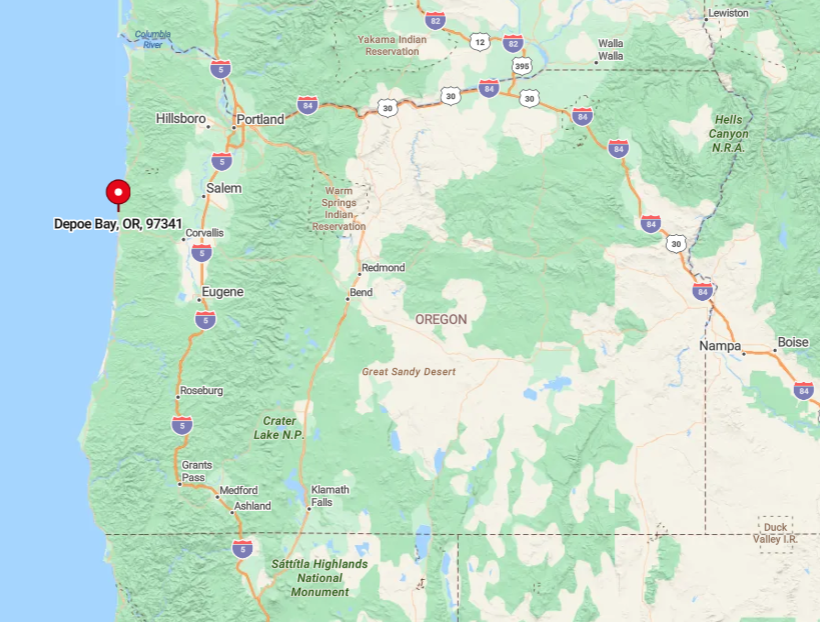
Depoe Bay rests on Oregon’s central coast, 12 miles south of Lincoln City along Highway 101, making it an easy detour for road-trippers hugging the Pacific. The harbor’s unique natural fissure provides quick access to deep water—salmon often swim within a mile of shore here.
Portlanders can make the drive in under two and a half hours, while Salem sits only 60 winding miles east. Parking is scarce, so I usually arrive at dawn, launch, fish, and be back in time to snag a curbside spot for fish-and-chips before crowds swell.
8. Gig Harbor, Washington

Gig Harbor curves like a protective arm around a fleet of pleasure craft and trolling skiffs, giving me glass-calm water ideal for mooching cut-plug herring. Summer brings swarms of resident blackmouth (immature Chinook) that keep rods bouncing even when migratory runs slow elsewhere.
When tides stall, I stroll the Heritage Waterfront to sample nettle pesto at the weekend farmers market or duck into the Harbor History Museum for a look at the 65-foot purse seiner Shenandoah under restoration.
My secret score is Sunrise Beach Park across the bridge; beach anglers fling spoons at passing pinks while Mount Rainier floats like a ghost on the horizon. Kayak rentals let me slip quietly along shoreline mansions where orcas occasionally cruise for salmon snacks of their own.
After dusk, the lights of Anthony’s restaurant reflect off the bay, and a cedar-plank king filet tastes better knowing I helped keep the local lore alive. Gig Harbor features 3-4 bedroom homes ranging from $700,000 to $1,000,000, reflecting its appeal as a peaceful harbor town with excellent salmon fishing opportunities.
Where is Gig Harbor?
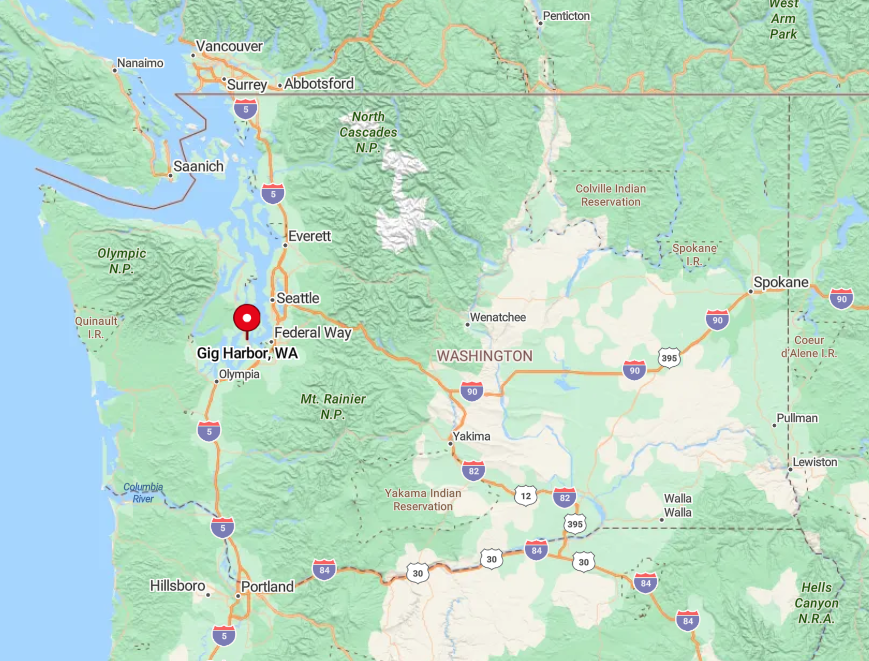
The town nestles on the Kitsap Peninsula, just west of Tacoma and reachable via the Tacoma Narrows Bridge on Highway 16. Its deep-water bay shelters boats from Puget Sound’s wind yet sits minutes from productive fisheries like Point Defiance and Dalco Pass.
Sea-Tac Airport is under an hour away, making quick weekend runs feasible even for out-of-staters. Once here, paved waterfront trails and frequent public docks make it easy to fish, dine, and explore without ever moving your car more than a few blocks.
7. Sandpoint, Idaho
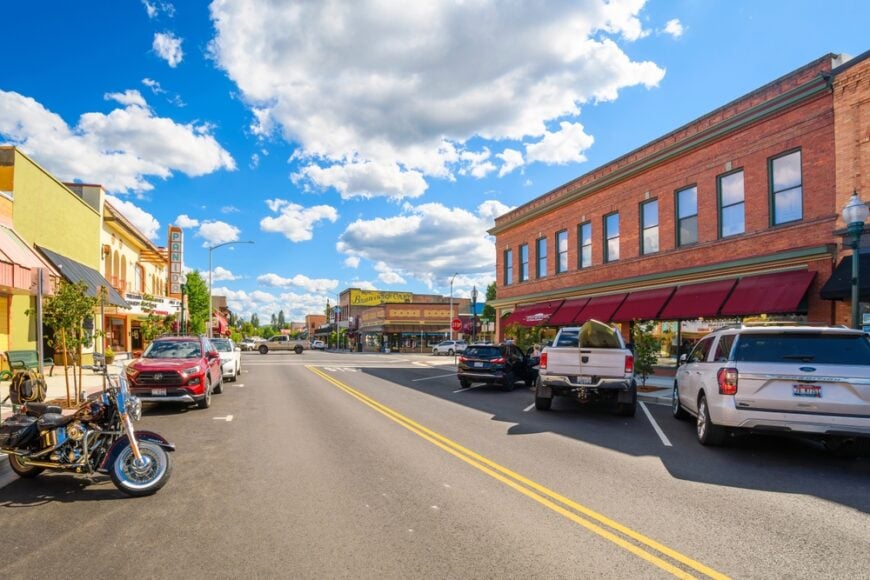
Sandpoint hugs the northwestern shore of Lake Pend Oreille, Idaho’s deepest lake and a surprising haven for land-locked Chinook that often top 20 pounds. I like cruising out at dawn while mist still clings to the Selkirk Mountains, flat-lining plugs 90 feet down for chrome torpedoes that rival coastal salmon.
When the bite slows, I beach at Green Bay, a pocket of Caribbean-blue water where quartz sand gleams beneath sunlit shallows—bring a snorkel, you’ll thank me later. The Pend d’Oreille Bay Trail starts downtown and threads pine groves so fragrant I’ve caught myself sniffing the air like a retriever.
A hidden gem is the cedar-lined Pack River Delta, where I’ve sight-fished fly-rod coho in skinny channels frequented more by moose than humans. 3-4 bedroom homes in Sandpoint range from $500,000 to $700,000, offering a beautiful lakeside setting with rivers and streams perfect for anglers.
Where is Sandpoint?
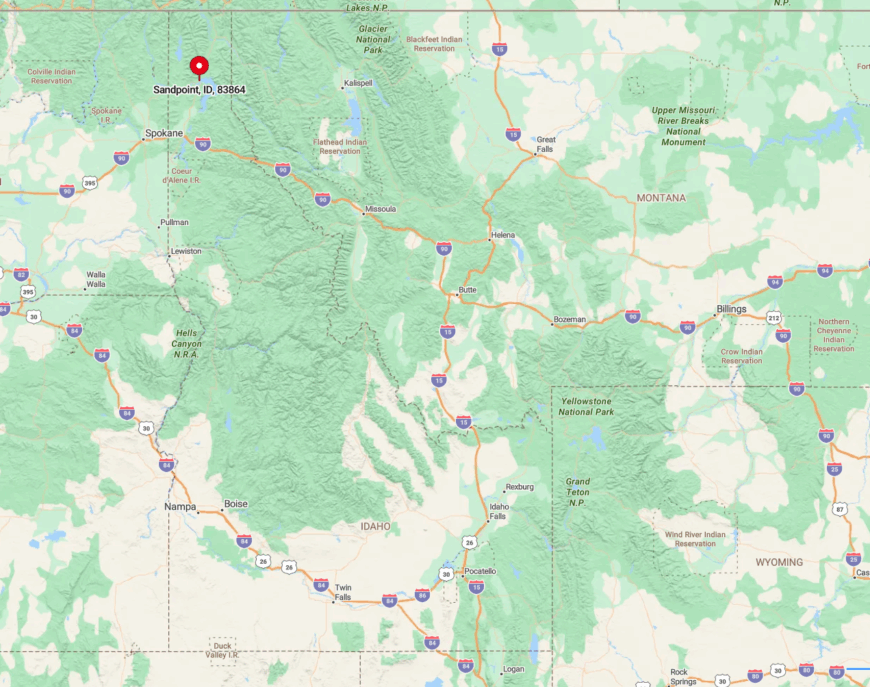
Located in Idaho’s panhandle, Sandpoint sits 45 miles south of the Canadian border and 75 miles northeast of Spokane International Airport via US 95. Glacier-carved Lake Pend Oreille plunges to 1,150 feet, creating thermal layers that support cold-water salmon year-round.
Amtrak’s Empire Builder stops right in town, a scenic alternative to driving through the Cabinet Mountains. Once you arrive, city bike paths and rentable skiffs make accessing coves and river mouths effortless.
6. Libby, Montana
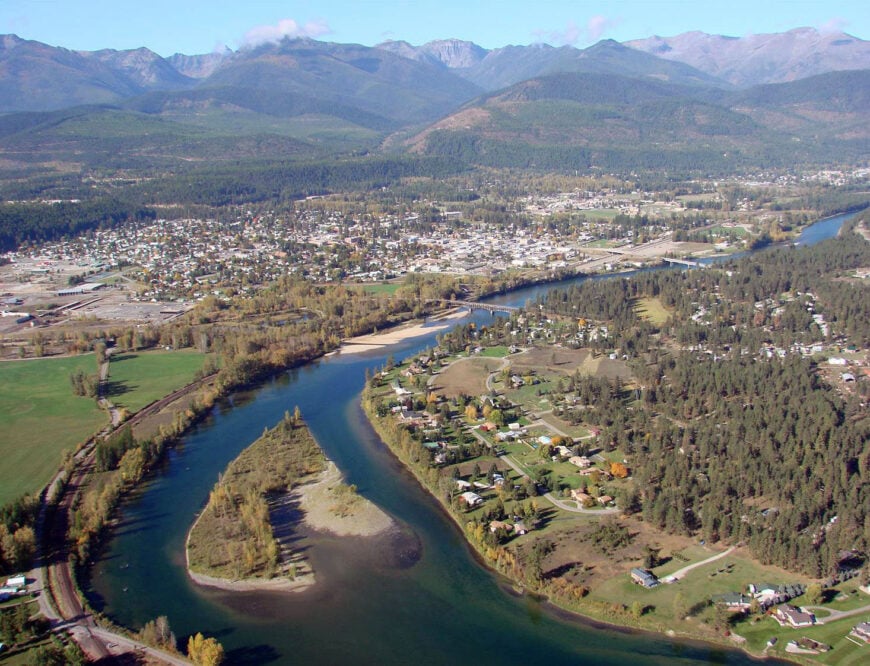
Libby rests against the Cabinet Mountains, where the turquoise Kootenai River loops below Libby Dam, its tailwater a salmonid superhighway all the way to the Pacific via British Columbia.
While native salmon runs struggle upstream of dams, the reservoir’s kokanee fishery compensates with boiling surface schools that gulls spot before I do. The 422-foot-high swinging bridge above Kootenai Falls offers both vertigo and fish reconnaissance—spot those shiny flashes, descend, and cast into foamy pockets.
The town’s hidden gem is the Heritage Museum’s 1920s steam locomotive; volunteer docents explain how early loggers shipped milled cedar ties down the same river corridor salmon still navigate today.
After dusk, I trade waders for boots and hit Cabinet Mountain Brewing, where their Peak Bagger Porter pairs nicely with river tales told under a ceiling of saw blades. Libby offers 3-4 bedroom homes between $250,000 and $400,000, making it a scenic and affordable choice for those seeking solitude and river access.
Where is Libby?
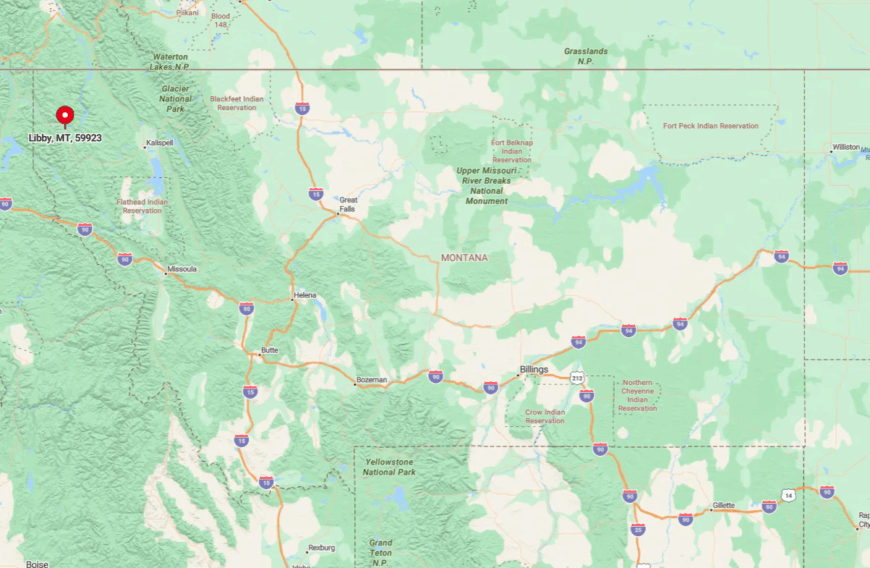
Libby lies in northwestern Montana on Highway 2, 90 minutes east of Idaho’s Sandpoint and 35 miles south of the Canadian border. The Kootenai River charges out of Libby Dam, its controlled flows keeping water temperatures salmon-friendly even during drought years.
Spokane International is the closest major airport, with scenic Highway 200 guiding drivers alongside the Clark Fork River before bending north to Libby. For rail buffs, Amtrak’s Empire Builder also stops here, making it one of the few towns where you can step off a train and be casting within half an hour.
5. Cascade Locks, Oregon
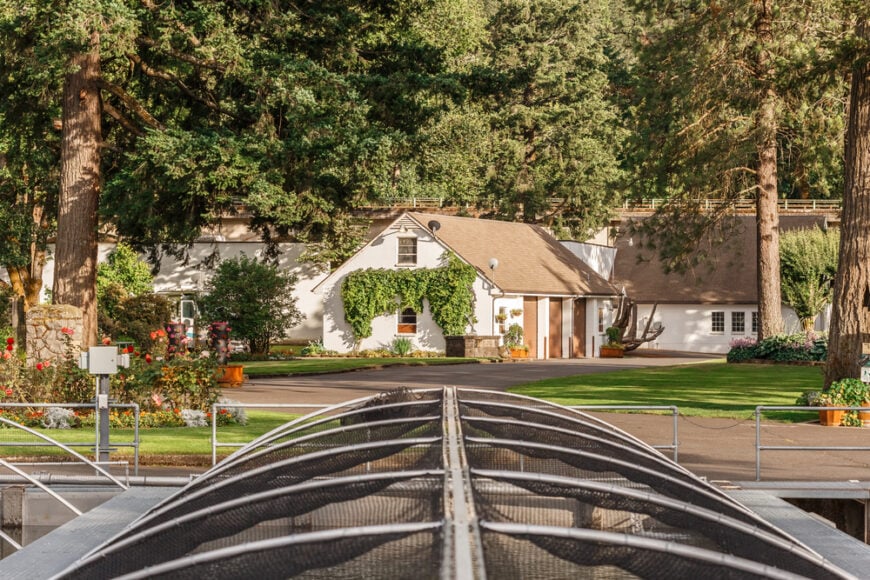
Squeezed between basalt cliffs in the Columbia River Gorge, Cascade Locks feels like a portal carved by both water and time. I love anchoring just downstream of the Bridge of the Gods, back-bouncing eggs for fall Chinook that pause here before tackling upriver fish ladders.
When wind howls—kiteboarders’ delight—I duck behind Stevenson’s sheltered eddy or grab soft-serve at East Wind Drive-In, watching barges slide beneath forested ridges.
Hidden gem: the lakeside arm of Herman Creek, where walk-in anglers can intercept chrome coho in ankle-deep water under a canopy of vine maple ablaze in autumn color. Off the river, the Pacific Crest Trail crosses the bridge, letting me swap waders for hiking shoes and clock a section mile or two.
Evenings often end aboard the sternwheeler Columbia Gorge, sipping local pinot noir while narration tells of salmon canneries that once lined these very banks. Cascade Locks features 3-4 bedroom homes priced between $400,000 and $550,000, offering views of the Columbia River Gorge and prime fishing territory.
Where is Cascade Locks?
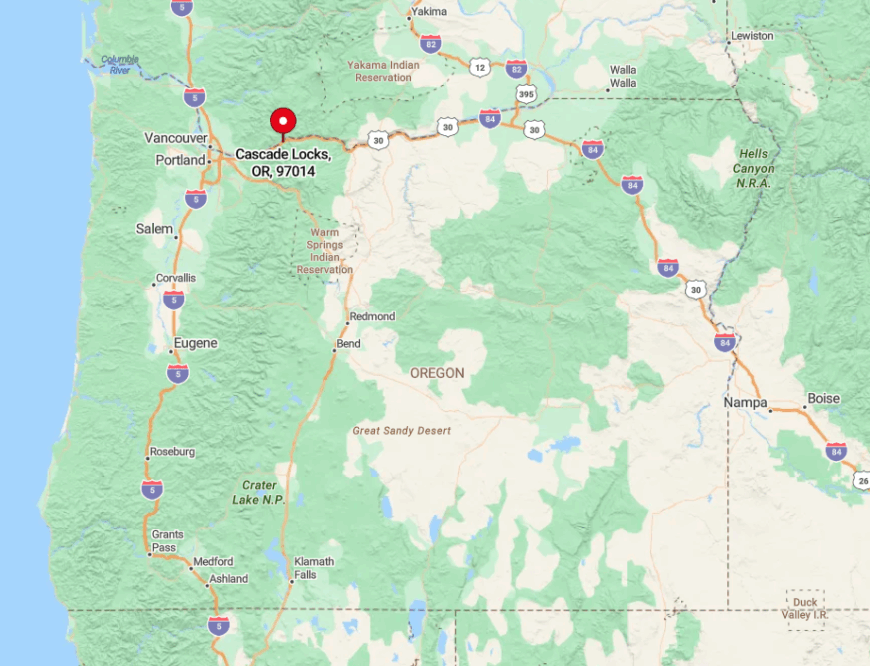
Just 45 miles east of Portland on Interstate 84, Cascade Locks is one of the Gorge’s most accessible towns, flanked by the Cascade Range and the wide Columbia. Steep canyon walls funnel wind and fish alike, making this a pinch-point salmon can’t avoid on their migration.
Portland’s MAX light-rail connects to buses reaching Hood River, but a personal vehicle offers the freedom to hop between boat ramps sprinkled along the river. Still, everything in town—from launch to lodge—clusters within a half-mile riverfront swath, so you can sleep, eat, and fish practically on the same dock.
4. Dillingham, Alaska

Dillingham sits at the edge of Bristol Bay, Earth’s most productive wild salmon fishery, where I’ve witnessed rivers literally roiling red with sockeye. Local guides buzz floatplanes upriver to remote tent camps on the Nushagak and Wood Rivers, granting access to king salmon that’ll test even the stoutest rods.
Between trips, I stroll Kanakanak Beach to beach-comb jade-colored sea glass and spot beluga whales hunting young salmon. A little-known treat is the Saturday market at the Senior Center, where elders sell smoked-chum strips that make perfect boat snacks.
When weather grounds planes, I visit the Sam Fox Museum for Yup’ik artifacts that underscore salmon’s cultural heartbeat here. Nights bring the glow of midnight sun over the harbor, fish totes stacked like Lego blocks waiting for tomorrow’s tide.
Dillingham has 3-4 bedroom homes ranging from $250,000 to $400,000, providing a remote yet rewarding location for avid salmon fishers.
Where is Dillingham?
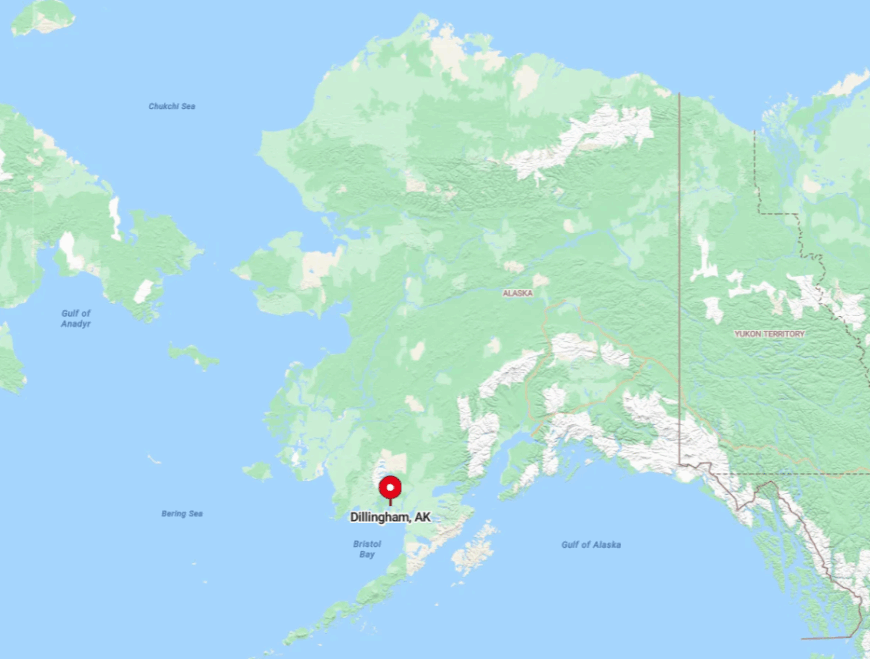
Remote yet buzzing during salmon season, Dillingham lies 330 air miles southwest of Anchorage on the western shore of Alaska’s vast Bristol Bay. No roads connect it to the highway system, so travelers fly via Ravn or Alaska Airlines turboprop, often craning necks for aerial views of braided rivers below.
That isolation keeps fishing pressure low and runs robust; once on the ground, jet boats and floatplanes function as taxis between river mouths and camp. The flat tundra landscape makes for dramatic cloudscapes, and a short walk from the airstrip puts a rod in your hand within the hour.
3. Joseph, Oregon
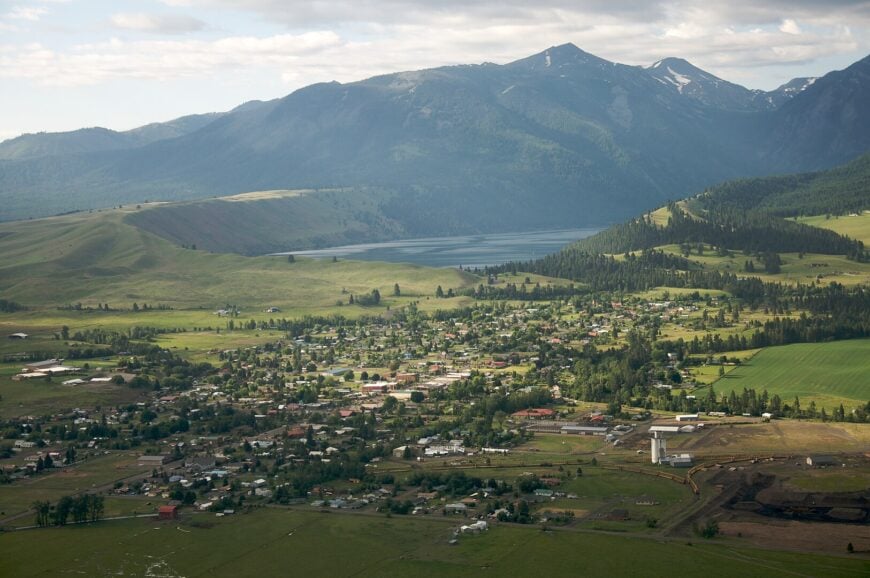
Joseph nestles beneath the Wallowa Mountains—“Oregon’s Alps”—where glaciers carved valleys now patrolled by salmon-rich rivers like the Wallowa and Grande Ronde.
Mornings find me stalking pool-tails for spring Chinook that glint like new coins against basalt bedrock, all under the gaze of 9,800-foot Matterhorn Peak. When fish nap, I trail-ride with the local stable through wildflower meadows or peruse bronze sculptures downtown that rival anything in larger art hubs.
A hidden sweet spot is the Lostine River’s crystal plunge pools, accessible by a dusty forest road most tourists miss; small, feisty salmon smolt migrate here, giving a glimpse of future runs. For lake time, Wallowa Lake’s marina rents paddleboards perfect for spotting cruising kokanee below in water as clear as gin.
Evenings wrap up at the Outlaw Restaurant, where huckleberry cheesecake fuels fireside yarns at the rustic Wallowa Lake campground. In Joseph, 3-4 bedroom homes are priced between $400,000 and $600,000, making it an inviting mountain town with nearby rivers full of seasonal salmon.
Where is Joseph?
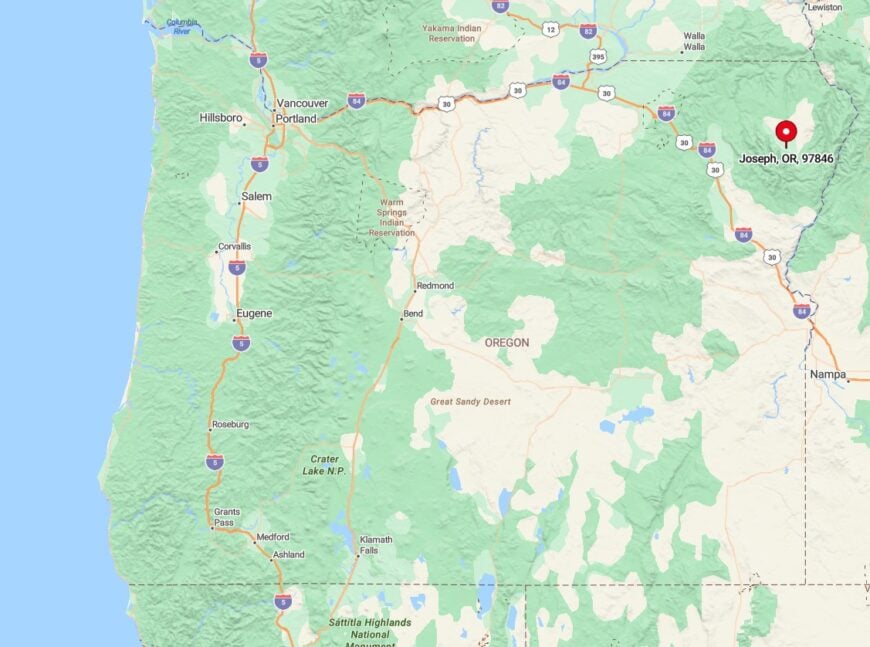
Joseph lies in Oregon’s far northeast corner, a five-hour drive from Portland via I-84 and the breathtaking Wallowa Mountain Loop. Because it’s tucked at the literal end of Highway 82, through-traffic is nonexistent, amplifying the town’s serene vibe.
The nearby confluence of Snake and Grande Ronde Rivers funnels salmon up from the Columbia, and their journey culminates in the clear tributaries fringing Joseph. No commercial flights land here; most anglers fly into Lewiston or Pendleton, rent a car, and enjoy the scenic climb into this alpine sanctuary.
2. Forks, Washington
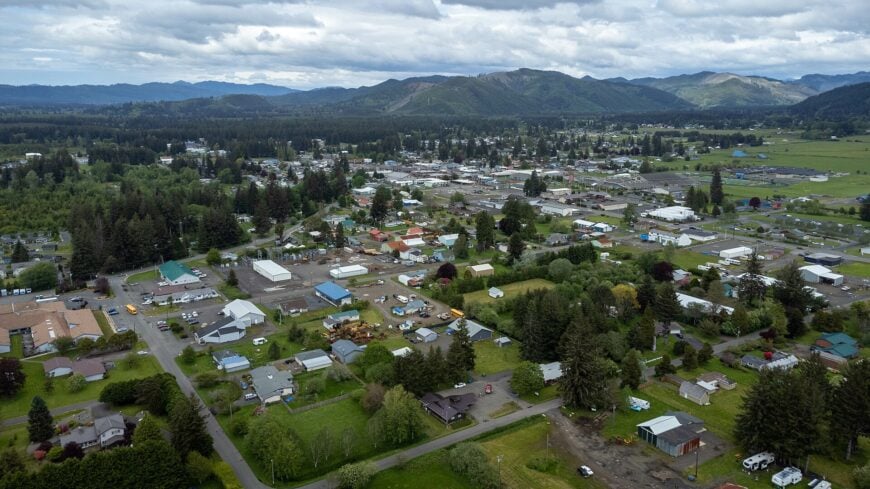
Forget sparkling vampires—Forks’ real allure is the thunder of rain on cedar leaves and the promise of chrome salmon in the Sol Duc and Hoh Rivers. I relish swinging intruder flies through misty runs while Roosevelt elk graze riverbanks like indifferent spectators.
Between sessions, I drive to Rialto Beach, where driftwood logs bigger than city buses frame tide pools teeming with starfish. Local intel: the Bogachiel Hatchery Trail offers bank access to under-fished stretches where summer coho hold before pushing upstream.
After dark, Sully’s Burgers serves a “logging truck” special that replenishes calories faster than any energy bar ever could. Forks offers 3-4 bedroom homes between $250,000 and $400,000, ideal for those wanting to live near the Hoh and Sol Duc Rivers, renowned for their salmon runs.
Where is Forks?

Forks sits on Washington’s Olympic Peninsula, roughly three hours from Seattle via ferries and Highway 101, surrounded by the moss-laden Olympic National Park rainforest. The town receives over 100 inches of rain annually, keeping rivers full and temperatures perfect for salmon almost year-round.
Public buses connect from Port Angeles, but I prefer driving to stash gear and explore multiple rivers in a single day. Forks’ remote peninsula position means ocean-fed nutrients surge quickly upstream, creating strong, healthy fish that give even seasoned anglers a workout.
1. Yachats, Oregon
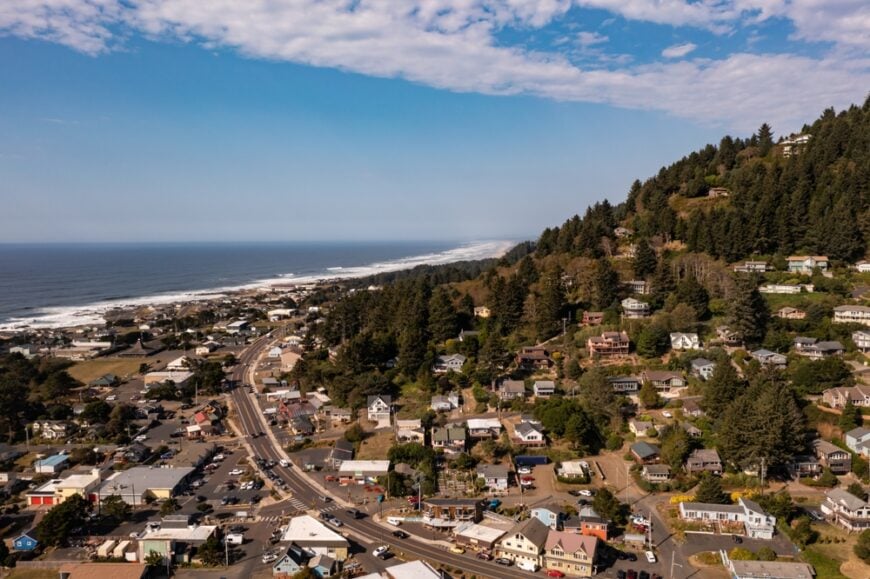
Yachats, pronounced “YA-hats,” is my personal slice of coastal zen, where steep, black lava rock meets foamy surf and salmon cruise just beyond the breakers. I love casting from Cape Perpetua’s shoreline platforms at dawn, the spray painting rainbows while surf-silvers smack bait in swirling tide pools below.
When swells intimidate, I head upriver to the Yachats River, a small but productive stream where early rains draw husky Chinook into waist-deep pools fringed by mossy alder roots—often I have the water all to myself.
Hidden gem: the Amanda’s Trail segment, where I sometimes stumble on chanterelle mushrooms for camp-side pasta after fishing. During sunset, I can watch my last cast arc against orange skies and know I’ve found salmon angler nirvana.
Yachats features 3-4 bedroom homes priced between $500,000 and $700,000, providing oceanfront tranquility with quick access to rivers rich in salmon.
Where is Yachats?

Yachats sits on Oregon’s central coast, 25 miles south of Newport along Highway 101, wedged between Siuslaw National Forest hills and the Pacific. The confluence of rocky headlands and freshwater creeks creates pocket estuaries where salmon stage before entering the Yachats and Tenmile rivers.
Eugene is the nearest major airport, a 90-minute drive through winding forest corridors perfumed by spruce and salt. Parking is easy in the compact downtown, and within five minutes on foot I can reach either surf line or river mouth, rod in hand, heartbeat already syncing with the tides.

